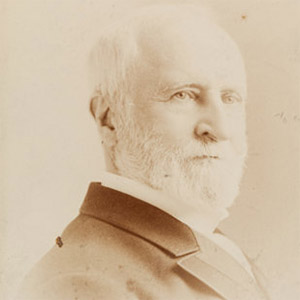
Happy midterms! Whatever your political leanings, we hope you’ll get out and vote today.
To toast this momentous occasion, I’ve rounded up five great U.S. jewelry history stories—all gleaned from a JCK history of American jewelry.
Here’s to American grit, ingenuity, and indomitable spirit!
Tiffany & Co.
Tiffany & Co., practically synonymous with American jewelry to this day, was founded in lower Manhattan in 1837 by Charles Lewis Tiffany and Teddy Young. Originally operating as Tiffany, Young and Ellis, a stationery and fine goods store, the firm became the first U.S. manufacturer to win an award for excellence at the Exposition Universelle in Paris in 1867.
The company’s milestones and innovations are famously extensive. Tiffany & Co. set the benchmark for the classic solitaire diamond engagement ring with its patented six-prong Tiffany setting in 1886. And the company is responsible for the discovery and naming of numerous gemstones, including kunzite and morganite.
It introduced the first luxury jewelry catalog, the iconic Blue Book, and positioned itself, almost from its inception, as a dealer and collector of important gemstones through a series of bold acquisitions, including the 128 ct. yellow Tiffany diamond and the French Crown jewels.
Marcus & Co.
One of Tiffany’s contemporaries at the turn of the century, Marcus & Co., was founded by one of its former employees, German émigré Herman Marcus. Marcus left Tiffany to partner with Theodore B. Starr (to form Starr & Marcus in 1864), but in 1884 joined his son, William, and George Jacques to form Jacques & Marcus, which became Marcus & Co. in 1892.
“Marcus & Co. was one of the most important American jewelers at the turn of the century,” says Lee Siegelson, a vintage jewelry expert and dealer based in Manhattan. “They created innovative gem-set and enameled pieces that rivaled those of Tiffany & Co.”
The company closed in 1941, two years after participating in the 1939 World’s Fair—an event many historians reference as the moment American-made fine jewelry, via the participation of companies including Tiffany & Co. and Marcus & Co., officially came into its own. But the fruits of its skilled craftsmen remain highly coveted by dealers and collectors on the secondary market.
Walter P. McTeigue & Co.
Walter P. McTeigue & Co. manufactured stunning designs for all the big jewelry retailers in the first half of the 20th century: Tiffany & Co.; J.E. Caldwell & Co.; C.D. Peacock; Black, Starr & Frost; and Shreve, Crump & Low.
Known for fine platinum and diamond jewelry in the Edwardian and, later, Art Deco styles, the company “was always a behind-the-scenes brand,” says Walter McTeigue, a descendant of the McTeigue family and former Harry Winston gem buyer who currently co-owns half of the fine jewelry firm McTeigue & McClelland. “It was the Belle Epoque, and wealthy people were very wealthy. We were making really incredible things, though the company wasn’t widely known. The people who did know it associated it with quality.”
Newark Manufacturing
A group of jewelry manufacturers in Newark, N.J., including the long-standing Krementz & Co., composed America’s first epicenter for large-scale production of fine jewelry. The high-quality, lower-cost products they manufactured widened the reach and audience for fine jewelry. Suddenly, the middle class could aspire to own diamonds.
Many of the craftsmen at these fabrication facilities ably copied the look of high-fashion jewelry from Europe. “The artisans made much less expensive Art Nouveau jewelry that was every bit as finely made as it was in Europe,” says jewelry historian Joyce Jonas.
Paul Flato
The original jeweler to the stars was Paul Flato, whose clients in the 1920s and 1930s included Joan Crawford, Marlene Dietrich, and Vivien Leigh. “His expressive, daring style contrasted with the conventional diamond designs available,” says Siegelson, “and they appealed to the height of fashionable society.”
Flato, who Jonas calls “one of the most imaginative jewelers in history,” opened a salon in New York in 1928 and an outpost in Los Angeles in 1937. The jeweler closed his business in 1943, but his figurative, often humorous style “reached its peak in the 1930s when Adolph Kleaty; George Headley; and Fulco, Duke of Verdura, designed pieces for him,” says Siegelson.
Top: Charles Lewis Tiffany, cofounder of Tiffany & Co. (courtesy Tiffany & Co.)
- Subscribe to the JCK News Daily
- Subscribe to the JCK Special Report
- Follow JCK on Instagram: @jckmagazine
- Follow JCK on X: @jckmagazine
- Follow JCK on Facebook: @jckmagazine